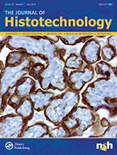
JOURNAL OF HISTOTECHNOLOGY
Scope & Guideline
Advancing histotechnology for a healthier tomorrow.
Introduction
Aims and Scopes
- Histological Techniques and Methodologies:
The journal publishes research on various histological techniques including staining protocols, embedding methods, and imaging technologies. This includes advancements in immunohistochemistry, electron microscopy, and tissue clearing methods. - Pathological Studies and Diagnostics:
A significant focus is on studies that utilize histological methods to diagnose and understand pathological conditions across different tissues and species, including both human and veterinary contexts. - Educational Resources and Best Practices:
The journal emphasizes educational content aimed at histotechnologists, providing frameworks and guidelines for best practices in histotechnology and quality assurance in laboratory settings. - Interdisciplinary Research:
The journal promotes interdisciplinary studies that bridge histotechnology with other fields such as molecular biology, genetics, and bioinformatics, highlighting the integration of advanced technologies like machine learning in histopathology. - Innovative Applications:
Research that explores novel applications of histotechnology in clinical settings, such as drug discovery and development, as well as emerging technologies in spatial biology and digital pathology.
Trending and Emerging
- Digital and Computational Pathology:
There is a growing emphasis on digital pathology tools, including machine learning applications for image analysis and data interpretation, reflecting the integration of technology in histopathological assessments. - Spatial Biology and Profiling Techniques:
Recent publications indicate a surge in interest in spatial biology, particularly techniques that allow for the analysis of tissue architecture and cellular interactions within their native environments, which are crucial for understanding complex biological systems. - Environmental and Ecotoxicological Histopathology:
Emerging research on the effects of environmental toxins on histological structures in various species shows an increasing relevance of histotechnology in ecological studies and public health. - Molecular Pathology and Biomarkers:
There is a rising trend in studies focusing on molecular pathology, particularly the identification and validation of biomarkers through immunohistochemical techniques, which can aid in diagnosis and prognosis. - 3D Histology and Advanced Imaging Techniques:
Innovations in three-dimensional histology and imaging methods are gaining traction, allowing for more comprehensive analyses of tissue samples and enhancing the understanding of complex histological features.
Declining or Waning
- Traditional Histotechnical Methods:
There has been a noticeable decline in publications centered around conventional histotechnical methods, such as basic staining techniques and standard embedding processes, as newer methodologies and technologies gain traction. - Animal Models in Histopathology:
Research utilizing animal models for histopathological studies appears to be decreasing, potentially due to an increasing focus on in vitro studies and alternative methodologies that do not require animal use. - Historical and Review Articles:
The frequency of historical reviews and retrospective studies has diminished, possibly as the journal shifts towards more contemporary research and novel findings that push the boundaries of the field. - Single Species Studies:
Papers focusing solely on histopathology of individual species, particularly in veterinary contexts, seem to be less frequent, with a trend towards comparative studies that encompass broader biological implications.
Similar Journals

Medical Molecular Morphology
Bridging Medicine and Molecular Insights.Medical Molecular Morphology, published by SPRINGER JAPAN KK, stands as a significant resource in the fields of medicine and molecular biology, bridging critical insights between histological studies and modern therapeutic approaches. With an ISSN of 1860-1480 and E-ISSN of 1860-1499, this journal has evolved since its inception in 1996 and has continued to provide a platform for innovative research through 2024, establishing its relevance particularly in the realms of medical pathology and molecular morphology. Although categorized as Q3 in Medicine (miscellaneous) and Q4 in Molecular Biology per the 2023 quartiles, the journal's unique contributions cannot be understated, as evidenced by its Scopus rankings, which place it in the 52nd percentile for Pathology and 19th percentile for Molecular Biology. The journal’s mission focuses on disseminating valuable findings that enhance the understanding of cellular and molecular structures and their implications in health and disease. As access options are not currently open access, it remains essential for professionals and researchers to consider the journal's contributions as they pursue academic growth and impactful research in these dynamic fields.
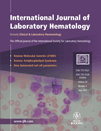
International Journal of Laboratory Hematology
Connecting research and practice for the future of laboratory hematology.The International Journal of Laboratory Hematology, published by WILEY, serves as a vital resource in the field of hematology, delivering high-quality research findings and innovations within laboratory practices since its inception in 2007. This journal, accessible under Open Access options, showcases cutting-edge studies that span critical aspects of biochemistry and clinical laboratory methodologies. With a notable impact factor reflected in its Q2 and Q3 rankings across various categories—such as Biochemistry (medical) and Hematology—this journal stands out within the Scopus rankings, positioning itself within the 60th and 59th percentiles of its respective fields. Situated in the United Kingdom, the journal's objectives lie in disseminating pivotal research that enhances our understanding of hematological disorders and laboratory techniques, making it an essential tool for researchers, professionals, and students alike who are committed to advancing the science of laboratory hematology and its applications.
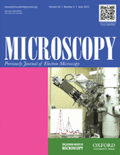
Microscopy
Exploring the Depths of Biological and Applied SciencesMicroscopy, published by Oxford University Press, is a prestigious journal dedicated to advancing the field of microscopy and imaging in biological and applied sciences. With a dynamic coverage dating from 1953 to the present, it offers vital insights into the latest techniques and applications across various disciplines, including Instrumentation, Radiology, Nuclear Medicine and Imaging, and Structural Biology. The journal is recognized for its quality, illustrated by its Q2 and Q3 quartile rankings in relevant categories for 2023. Researchers, professionals, and students will find Microscopy an invaluable resource for keeping abreast of contemporary developments and methodologies in the field. As an open-access journal, it promotes equitable access to cutting-edge research and fosters collaboration among the international scientific community, making it essential reading for anyone involved in microscopy research and its applications. For more information, please visit their site for access options and contributions.

HISTOLOGY AND HISTOPATHOLOGY
Elevating Knowledge in Histology and HistopathologyHISTOLOGY AND HISTOPATHOLOGY, published by F HERNANDEZ, is an esteemed academic journal dedicated to advancing the fields of histology and pathology. With its ISSN 0213-3911 and E-ISSN 1699-5848, this journal has been a crucial resource for researchers and professionals since its inception in 1986. The journal enjoys a strong reputation, evidenced by its Q2 category rankings in both Histology and Pathology & Forensic Medicine as of 2023, positioning it within the top tier of scholarly publications. With Scopus rankings placing it at Rank #74/208 in Medicine - Pathology and Forensic Medicine and Rank #31/62 in Medicine - Histology, it proves to be an essential platform for disseminating significant research findings and innovations. Although the journal is not open access, it is committed to providing high-quality, peer-reviewed articles that cater to the needs of its academic community. With a focus on fostering a deeper understanding of tissue structure and disease mechanisms, HISTOLOGY AND HISTOPATHOLOGY serves as an indispensable resource for students, researchers, and practitioners alike, facilitating the exchange of knowledge and pioneering research in these vital areas of study.
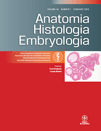
ANATOMIA HISTOLOGIA EMBRYOLOGIA
Charting New Territories in Histological and Embryological StudiesANATOMIA HISTOLOGIA EMBRYOLOGIA, published by Wiley, is a well-regarded journal that serves as a vital resource in the field of anatomy and histology, with a particular emphasis on embryological studies. Established in 1972, this journal fosters cutting-edge research and discussions that deepen our understanding of the intricate relationships between structure and function across various species, while also addressing the parallels within veterinary and medical contexts. Though currently not open access, the journal maintains a significant impact within its scope, evidenced by its strong performance in Scopus rankings, particularly in the veterinary sciences, where it stands at rank #81 out of 194. With its dedicated focus on progressive scientific inquiry and publication regularly until 2024, the journal is committed to advancing knowledge and providing a platform for scholars, researchers, and practitioners alike. ANATOMIA HISTOLOGIA EMBRYOLOGIA is pivotal for those aiming to engage with the latest findings and methodologies in the fields of medicine and veterinary science, ensuring it remains an essential addition to any academic library.
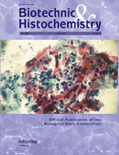
BIOTECHNIC & HISTOCHEMISTRY
Fostering Excellence in Histochemical ResearchBIOTECHNIC & HISTOCHEMISTRY is a distinguished journal published by Taylor & Francis Ltd, dedicated to advancing the fields of histochemistry and medical laboratory technology. With a history of publication dating back to 1926 and a commitment to excellence, this journal serves as a vital resource for researchers, professionals, and students seeking to explore cutting-edge techniques and emerging trends within the biomedical sciences. As evidenced by its 2023 categorizations, including Q3 in Histology and Q2 in Medical Laboratory Technology, BIOTECHNIC & HISTOCHEMISTRY maintains a strong academic presence, with Scopus rankings reflecting its relevance and impact within the scientific community. Although it is not an open-access journal, it offers multiple access options for readers and contributors. The journal emphasizes rigorous peer review and encourages submissions that contribute to the understanding and application of histochemical techniques in diagnostics and research. By fostering scholarly communication, it aims to enhance the integration of biotechnology into clinical practice, thereby supporting the health profession’s evolving landscape.

MICROSCOPY RESEARCH AND TECHNIQUE
Transforming microscopy into a catalyst for discovery.Microscopy Research and Technique, published by Wiley, is a leading journal in the field of microscopy, emphasizing innovative research and advancements in both techniques and applications. With an ISSN of 1059-910X, this journal caters to a diverse audience, including researchers, professionals, and students, and spans various disciplines such as anatomy, histology, and medical laboratory technology. As evidenced by its impressive 2023 ranking in Scopus, placed in the top quartile for Anatomy and Medical Laboratory Technology, the journal continues to play a pivotal role in enhancing the understanding of microscopic techniques and their applications in life sciences. While it does not currently offer open access, the journal’s content is invaluable for those in the research community seeking to remain at the forefront of microscopy advancements. Covering a broad range of topics from basic research to clinical applications, Microscopy Research and Technique is a vital resource for anyone involved in scientific discovery through microscopy.
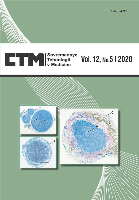
Sovremennye Tehnologii v Medicine
Advancing Healthcare with Cutting-Edge TechnologiesSovremennye Tehnologii v Medicine is a prominent academic journal dedicated to the exploration and dissemination of contemporary technologies in the field of medicine. Published by the esteemed Nizhniy Novgorod State Medical Academy, this journal serves as a vital platform for researchers, healthcare professionals, and students seeking to stay at the forefront of advancements in biochemistry, genetics, and molecular biology. With an impact factor that positions it within the Q3 quartile for both Biochemistry, Genetics and Molecular Biology and Medicine categories as of 2023, it highlights a commitment to quality research. The journal, identified by the ISSN 2076-4243, provides a rich repository of knowledge for those interested in the innovative applications of medical science, contributing significantly to the academic discourse and the practical world of healthcare. With an open access option, it ensures that its valuable content is readily accessible to a global audience, fostering collaborative advancements in modern medical practices.

APPLIED IMMUNOHISTOCHEMISTRY & MOLECULAR MORPHOLOGY
Bridging the gap between theory and practice in immunohistochemistry.Applied Immunohistochemistry & Molecular Morphology, published by Lippincott Williams & Wilkins, stands as a pivotal resource within the fields of histology, medical laboratory technology, and pathology. With an ISSN of 1541-2016 and an E-ISSN of 1533-4058, this journal has been contributing significant research and advancements since its inception in 1996. It serves a diverse audience, including researchers, professionals, and students, aiming to enhance the understanding of immunohistochemical techniques and molecular morphology. Recognized for its quality, it holds category quartiles of Q3 in histology and Q2 in medical laboratory technology and pathology and forensic medicine as of 2023. The journal's rigorous peer-review process ensures that only the most impactful findings are disseminated, thus advancing the education and practice in these critical domains of study. Though it is not an open-access journal, it remains essential for keeping abreast of the latest methodological innovations and applications in pathology and laboratory science, as evidenced by its respectable Scopus rankings and the continual convergence of groundbreaking research published through 2024.

Journal of the Anatomical Society of India
Pioneering insights in anatomy and forensic medicine.The Journal of the Anatomical Society of India, established in 1960, is a key publication in the field of anatomy and pathology, published by Wolters Kluwer Medknow Publications. With an ISSN of 0003-2778 and an E-ISSN of 2352-3050, this journal serves as a vital platform for disseminating innovative research and advancements in anatomical sciences. Although it currently features a Q4 ranking in both the categories of Anatomy and Pathology and Forensic Medicine as of 2023, the journal aims to elevate scientific discussions and collaborations among researchers, professionals, and students. The impact factor highlights its relevance in the scientific community, although specific metrics are currently unavailable. Located in the dynamic hub of Mumbai, India, the journal encapsulates a commitment to enriching academic discourse while addressing the latest developments and breakthroughs in the field. Researchers looking for a valued resource within anatomy and related disciplines will find this journal an essential read.